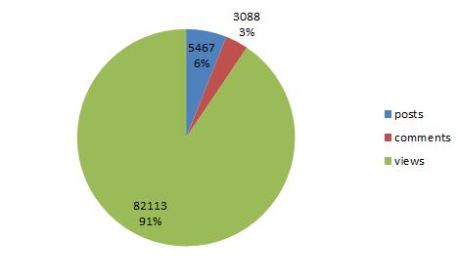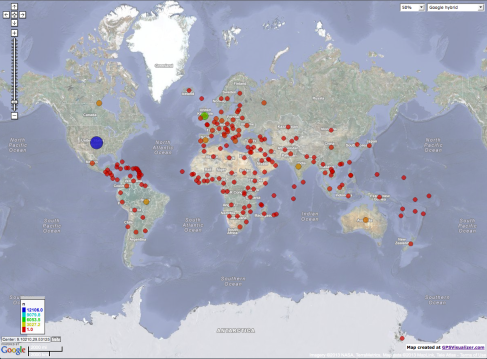I am beginning this week with some thoughts about how a MOOC might be defined, or as Hamish put it last week ‘the matter of what a MOOC is (or might be)’. In the aftermath of a chaotic, demanding, and sometimes disorderly two weeks, I am suddenly reminded of the EDCMOOC as it was a couple of months ago: a rather neat and orderly set of pages within the Coursera site, and an underdeveloped but efficient Yahoo Pipe connected to an empty EDC MOOC News WordPress site. These spaces weren’t so much barren, as taut with the imminent launch; with the impending responses and flows that might stream through them. Nevertheless, a MOOC before launch, as I’m realising ever more, appears to be something very different from a MOOC in full flow. While previous musings have focussed on the ‘massive’, the ‘open’ or the ‘online’, in attempting to comprehend or appreciate this EDCMOOC, I am now propelled towards ‘course’. However, ‘course’ as in ‘flow’, or ‘stream’.
I have, of course, been reading the recent David Gelernter article in Wired on the future of the web, and was struck by the claim that ‘the field [of computing] has finally moved from conserving resources ingeniously to squandering them creatively’. In what sense then, might a MOOC be the creative squandering of resources? If we think about the EDC MOOC in terms of time, the resources we have provided as teachers become the starting point, the bucket at the bottom of the well, to use Gelernter’s analogy. What happens around these resources; the discussions, blogs and tweets that orbit and approximate them, are streams and flows of activity from which the present state of the MOOC might be estimated.
In attempting to approach what this MOOC is, I often find myself drawn to the immediate: the latest forum post within a thread, the newest blog post, and ever-present Twitter stream. Many of the comments about the discussion forums appear to mirror this sentiment, describing their contributions as being quickly lost in the sea of alternatives, immediately disappearing into the past of the MOOC. This interest in the current condition seems to be particular to my role as a teacher. My gaze at the MOOC is not so much concerned with the resources, but ‘what is happening now’. The content that we curated has perhaps been spent, squandered, exhausted, and the streams, aftermaths and reverberations that echo through the web, become the MOOC as it is now.
Just as Gelernter appears to be proposing the ‘stream browser’ as an alternative way of dealing with the immensity and mutability of the web, I am wondering whether such an approach has any resonance with the massiveness of this MOOC. Rather than attempting to encapsulate something as vast and diverse, as the EDCMOOC appears to be, perhaps a focus on a present moment is one way in which it can be approached. However, that way of understanding can only last as long as the streams of information.
I am reminded of a tweet from Martell Linsdell in week 1: ‘Digital footprints, traces, but so much and many of them. A difficult archaeological dig for the future’
I have found the Twitter chats really interesting in my thinking about time in relation to the MOOC, particularly the way they have been analysed and represented. They seem to be explorations of how we might represent, or embody the sense of ‘being in’ the MOOC, experiencing it as duration in some way. The visualisations from Andy Mitchel were intriguing in this respect. Then I came across this video from Asbjørn Skovsende (@danishbuddha), and for a moment it all seemed to make sense. The Star Wars-inspired introductory text marches away into the darkness of the past. Each line is read, and then immediately squandered as we grasp for the next.
Jeremy Knox
@j_k_knox


